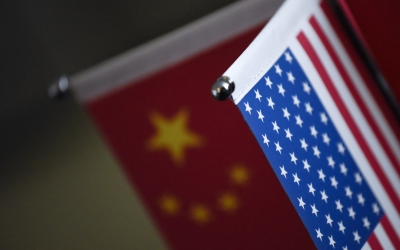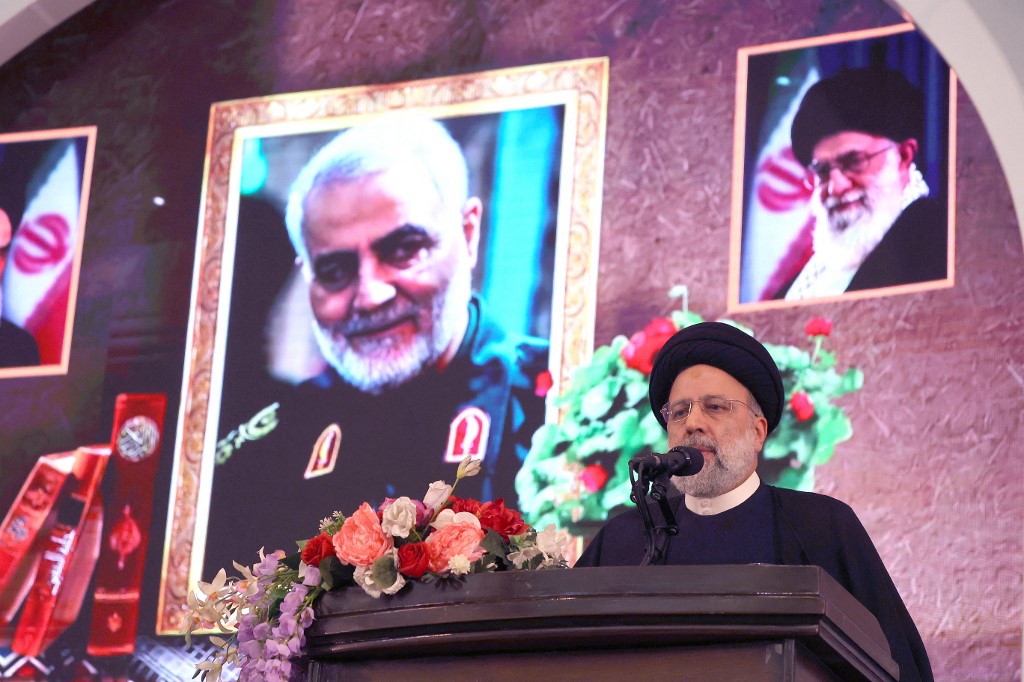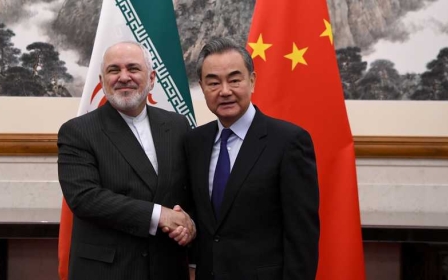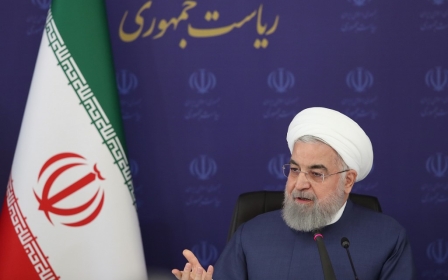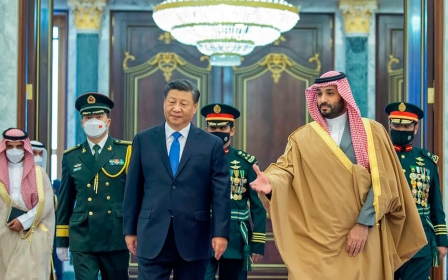China-Iran: Is Beijing playing the 'Iran card' against the US?
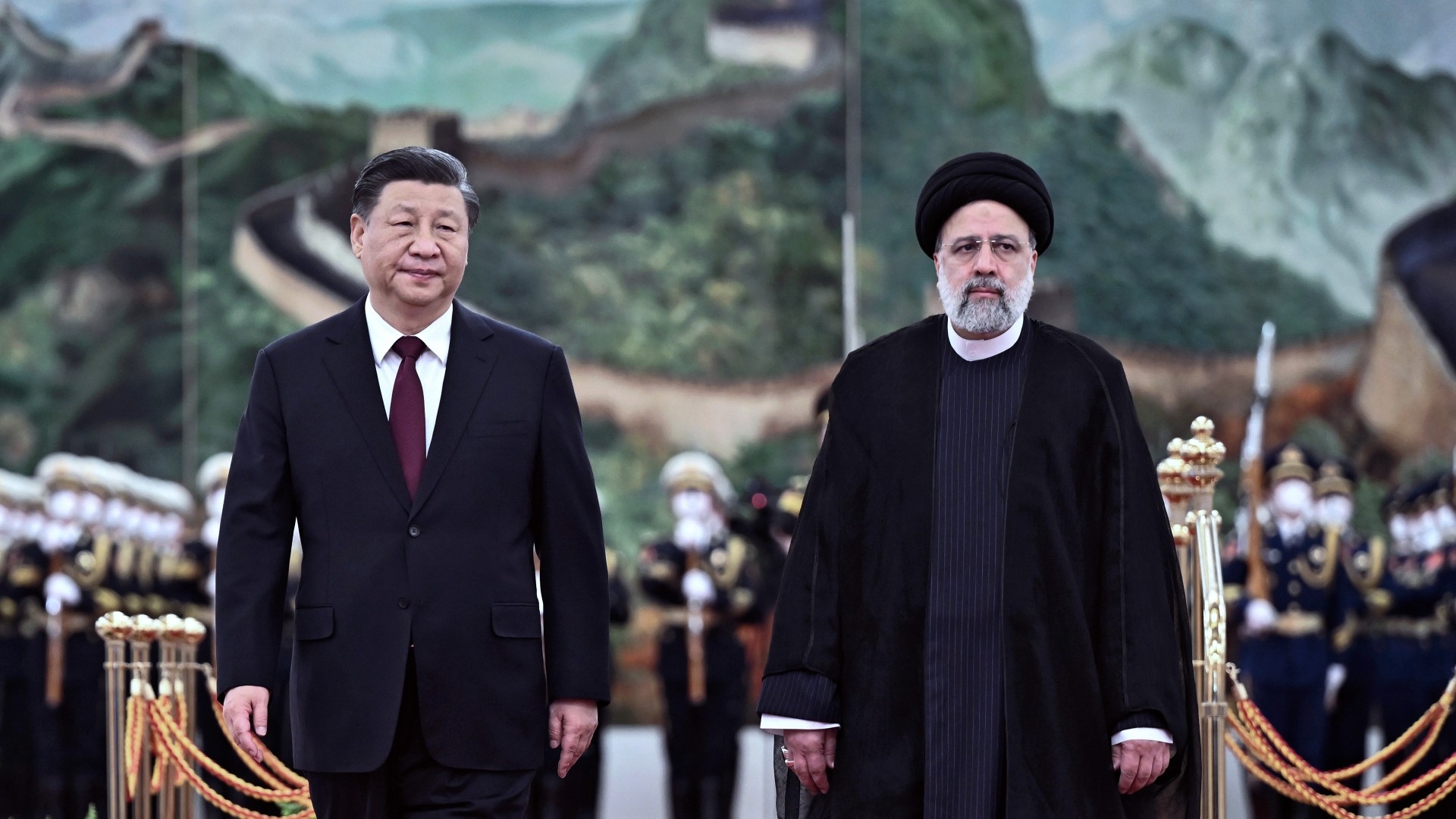
Competition between the United States and China over global dominance reached a new level during the tenure of President Barack Obama.
Obama launched his Pivot to Asia policy as a way of confronting Chinese initiatives that were seen as leveraging China’s economic power to achieve political gains, regionally and globally.
In Chinese eyes, on the other hand, the US has always been concerned with protecting its own global dominance while doing everything it can to retard or disrupt China’s rise.
Donald Trump, with a sense that America had been weakened by the Covid-19 pandemic adding to his fear of being overtaken by China, raised the pitch of the confrontation up again.
He slammed China as being responsible for the virus and began a trade war in the shape of an escalation of tariffs.
Robert O’Brien, Trump's national security adviser, gave a speech saying that China was seeking to take advantage of the crisis caused by the pandemic “to displace the United States as the leading global power”.
Then, in an aggressive, unprecedented, statement, Mike Pompeo, the secretary of state, put forward the idea of regime change, saying: "If the free world doesn’t change communist China, [China] will surely change us."
Relations have not softened under President Joe Biden.
His National Security Strategy of October 2022 highlighted China as “the only competitor with both the intent to reshape the international order and, increasingly, the economic, diplomatic, military and technological power to do it. Beijing has ambitions… to become the world’s leading power."
Increased competition
Here is what the US is deeply worried about: China’s rise to become the most powerful economy in the world.
The document reads: “Beijing frequently uses its economic power to coerce countries. It benefits from the openness of the international economy while limiting access to its domestic market, and it seeks to make the world more dependent on the People’s Republic of China while reducing its own dependence on the world.”
Data from the World Bank shows that China’s GDP (based on purchasing power parity, or PPP) was $27.3tn in 2021, compared with $23tn for the US.
The latest world economic outlook growth projections by the IMF for 2024 show US economic growth at one percent compared to China’s at 4.5 percent.
Since the 1950s, America has been the key power broker in the Middle East. However, it is now facing increased competition from China
According to the IMF, GDP (based on PPP) as a country’s share of the world GDP in 2025 will be 19.41 percent for China, compared to 14.71 percent for the US.
Against this backdrop, China's President Xi Jinping visited Saudi Arabia in December.
Since the 1950s, America has been the key power broker in the Middle East. However, it is now facing increased competition from China.
The most prominent message of Xi’s visit was that the region's countries were taking a more independent line towards Beijing than the Americans would like.
Ostensibly, the US is concerned about China’s growing connections with US allies in the Middle East, and these allies have been told by Washington that their deepening ties with Beijing could hamper cooperation with the US, their chief strategic ally and security partner.
Then came Biden’s State of the Union speech in January, in which he mentioned China and its leader at least seven times. His focus was on on how the US was increasingly prepared to compete with China.
China reacted, with Foreign Ministry spokesperson Mao Ning saying: “It is not the practice of a responsible country to smear a country or restrict the country’s legitimate development rights under the excuse of competition."
China did not fear competing with the US, he said, but was “opposed to defining the entire China-US relationship in terms of competition”.
Mending ties
Against this background, Iran’s president, Ebrahim Raisi was invited by Xi to visit China.
The invitation came soon after a violent crackdown on the recent 100-day protests in Iran that seriously questioned the Iranian system’s legitimacy and left several hundred dead, as well as thousands injured and arrested.
But what was Xi’s motivation for the invitation?
At the end of his visit to Saudi Arabia, in a statement released following the Gulf Cooperation Council (GCC) - China summit in Riyadh, the GCC and China called for "bilateral negotiations in accordance with the rules of international law" to resolve the dispute over three islands that lie between between Iran and the United Arab Emirates.
This went against Iran’s stance of categorically rejecting any talks over the issue. Tehran reacted furiously and even took the unprecedented step of summoning the Chinese ambassador to express its condemnation of Beijing for the move.
Subsequently, relations between the two governments hit a wall and some experts view Xi’s invitation as an effort to fix relations with Tehran.
That could be partly true. But the move could also be in response to the continued deterioration in relations between Beijing and Washington, as well as Biden’s aggressive position toward China in his State of the Union address.
In March 2021, the governments of Iran and China signed a document entitled Iran–China Comprehensive Strategic Partnership, the details of which have not been published.
Xi proposed the idea of the agreement during his visit to Iran in 2016. In June 2020, the Iranian “final version”, shared with Beijing, was leaked by the New York Times.
According to the newspaper’s sources, it laid out how Chinese investments in Iran would total $400bn over 25 years while, in exchange, China would receive a heavily discounted supply of Iranian oil over the same period.
For the Iranian government, making the agreement operational was at the top of the agenda for Raisi’s visit to China.
“In this trip, first the implementation of the 25-year strategic document signed between the two countries will be pursued,” Raisi said at the airport before leaving Tehran. But will that happen?
Based on reports by the Iran-China Chamber of Commerce, the value of Iran’s non-oil exports to China in 2022 reached $6.3bn, while Chinese exports to Iran were worth $9.4bn. According to a report, China has spent $47bn on imports from Iran since Biden came to office in 2021.
While these numbers fluctuate, however, this type of spending is completely different from the 25-year mega investments by China in Iran, a country that is considered to have the most hostile relations with the US.
For an illustration of just how hostile, we only need remember the 2020 killing by American forces of Qassem Soleimani, ex-commander of the Islamic Revolutionary Guard Corps, the man who dictated Iran’s foreign policy, and probably the second most powerful man in Iran.
To evaluate the likelihood of the implementation of the strategic partnership, let us not forget that in 2018 China’s oil giant CNPC withdrew from a $4.8bn development project at an Iranian offshore gas field after the Trump administration withdrew from the 2015 nuclear accord and reimposed sanctions on Iran.
Chinese car makers also left Iran following the US withdrawal.
Deeply connected
Despite their competition, China and the US, the two largest economies in the world, are deeply connected.
"Trade in goods between the US and China climbed to a record high in 2022,” according to Bloomberg. "Total merchandise trade between the two countries rose to $690bn."
That is almost $2bn a day, making the US China’s top trading partner in terms of export sales.
Although China simply signing a long-term strategic agreement with Iran may not trigger a reaction from Washington, the implementation of such an agreement would be a different story.
Making a strategic long-term agreement with the Iranian government operational would involve the substantial risk of transforming the hegemonic US-China rivalry into a conflict, especially now that relations between the two are at such a low ebb.
So, what was Xi actually thinking by extending his invitation to Tehran?
It's possible that his controversial move could be a case of playing the Iran card against the US in order to push them back from their current aggressive position.
Think of it like China holding the agreement like a sword of Damocles over the American political system.
The views expressed in this article belong to the author and do not necessarily reflect the editorial policy of Middle East Eye.
Middle East Eye propose une couverture et une analyse indépendantes et incomparables du Moyen-Orient, de l’Afrique du Nord et d’autres régions du monde. Pour en savoir plus sur la reprise de ce contenu et les frais qui s’appliquent, veuillez remplir ce formulaire [en anglais]. Pour en savoir plus sur MEE, cliquez ici [en anglais].



